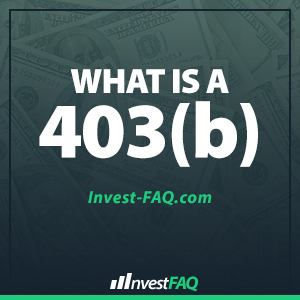 A 403(b) plan is a retirement savings plan that is funded by employee contributions and (often) matching contributions from the employer. Tax-exempt organizations (i.e., 501(c)(3) employers) such as churches, schools, and charities offer these plans to their employees.
A 403(b) plan is a retirement savings plan that is funded by employee contributions and (often) matching contributions from the employer. Tax-exempt organizations (i.e., 501(c)(3) employers) such as churches, schools, and charities offer these plans to their employees.
In tax year 2019, an employee can contribute up to $19,000 to the plan via payroll deductions. An employee age 50 or older is allowed an additional contribution of up to $6,000 as a “catch-up” provision. These employee contributions are taken from pre-tax income, so you don’t pay income tax on that amount. The employer may make additional contributions for a total contribution limit of $56,000 in 2019. All contributions, even any contributions from the employer, become the property of the employee immediately. The plan defers taxes on the income and growth of that income until the monies are withdrawn. At withdrawal time the monies are treated as ordinary income.
The 403(b) plans are not “qualified plans” under the tax code, but are generally higher cost “Tax-Sheltered Annuity Arrangements”. They can only be offered by tax-exempt organizations. They can only invest in annuities or mutual funds. So they are similar to qualified plans such as 401(k) plans, but have some important differences, as follows.
The rules for top-heavy plans do not apply.
Employer contributions are excludable from income only to the extent of employees “exclusion allowance.” Exclusion allowance is the total excludable employer contribution for any prior year minus 20% of annual includible compensation multiplied by years of service (prorated for part-timers). Whew! I have no idea what this means. In my own case there is no extra employer contribution, but rather a salary reduction agreement. So the so-called employer contribution is actually my own contribution. At least I think it is.
Contributions to a custodial account invested in mutual funds are subject to a special 6% excise tax on the amount by which they exceed the maximum amount excludable from income. (This sounds scary as the calculation for excludable income seems quite complex. E.g., I already have another tax-deferred retirement plan which probably needs to be calculated into the total allowed in the 403b).
The usual 10% penalty on early withdrawal and the 15% excise tax on excess distributions still apply as in 401(k) plans.
As of 2002, an individual may participate in a 403(b) plan and a 457(b) plan at the same time. This is interesting for people who work at an employer that offers both plans.
NOTE: The above is my paraphrasing of the U.S. Master Tax Guide for 1993. Recent changes in the laws governing 401(k)-type arrangements have made these available to non-profit institutions as well, and this has made the old 403(b) plans less attractive to many.
This page from the IRS summarizes these plans:
http://www.irs.gov/retirement/article/0,,id=108946,00.html
Article Credits:
Contributed-By: Joseph Morlan, Chris Lott
